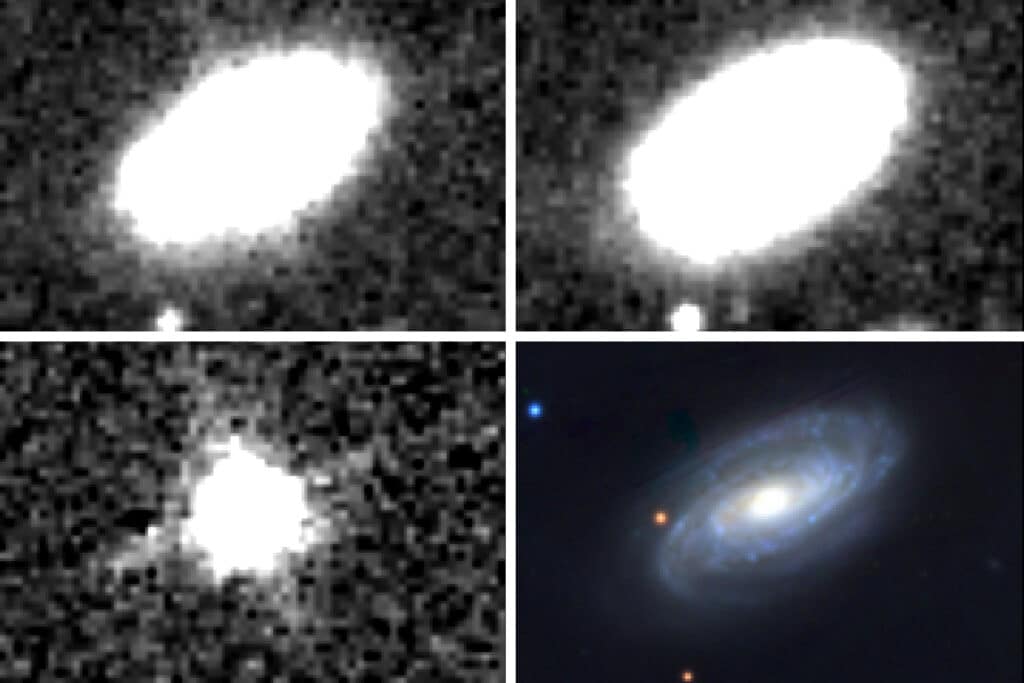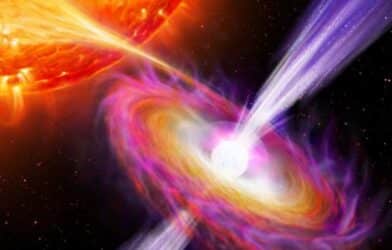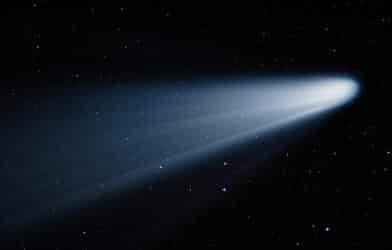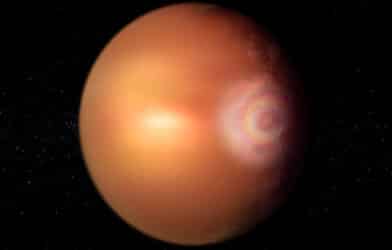A team of astronomers at the Massachusetts Institute of Technology has discovered a new tidal disruption event (TDE) that is the closest and brightest to be observed, known as WTP14adbjsh. A TDE is a phenomenon that occurs when the supermassive black hole at the center of a galaxy tears apart a passing star, emitting a burst of light that is typically detected in X-rays and optical radiation. However, the new TDE was detected in infrared light and was missed by conventional surveys due to being obscured by an enormous amount of dust that absorbed the radiation and gave off heat in the form of infrared energy.
The researchers found that the TDE occurred in a young, star-forming galaxy, which is different from most TDEs previously discovered in quieter galaxies. They suspect that conventional X-ray and optical surveys may have missed TDEs in star-forming galaxies due to their natural production of more dust that can obscure any light coming from their core.
“This nearby TDE means that, statistically, there must be a large population of these events that traditional methods were blind to,” says Christos Panagiotou, a postdoc in MIT’s Kavli Institute for Astrophysics and Space Research, in a statement. “So, we should try to find these in infrared if we want a complete picture of black holes and their host galaxies.”
The researchers used data taken by NASA’s NEOWISE mission, a space telescope that has made regular scans of the entire sky since 2010, at infrared wavelengths, to look for potential transient events in archival data. They traced the TDE to a galaxy 137 million light-years from Earth, and estimated that the supermassive black hole at the center of the galaxy was about 30 million times as massive as the sun.

The team also found that the galaxy itself is actively producing new stars, which contradicts most TDEs previously discovered in quieter galaxies. Star-forming galaxies also produce a lot of dust from the interactions between and among stars near a galaxy’s core. This dust is detectable at infrared wavelengths, but it can obscure any X-ray or UV radiation that would otherwise be picked up by optical telescopes.
“The fact that optical and X-ray surveys missed this luminous TDE in our own backyard is very illuminating, and demonstrates that these surveys are only giving us a partial census of the total population of TDEs,” says Suvi Gezari, associate astronomer and chair of the Science Staff at the Space Telescope Science Institute in Maryland.
This discovery shows that there may be many more TDEs in active, star-forming galaxies that were previously missed by conventional surveys. This research was supported, in part, by NASA.
The research is published in The Astrophysical Journal Letters.









-392x250.png)


Comments